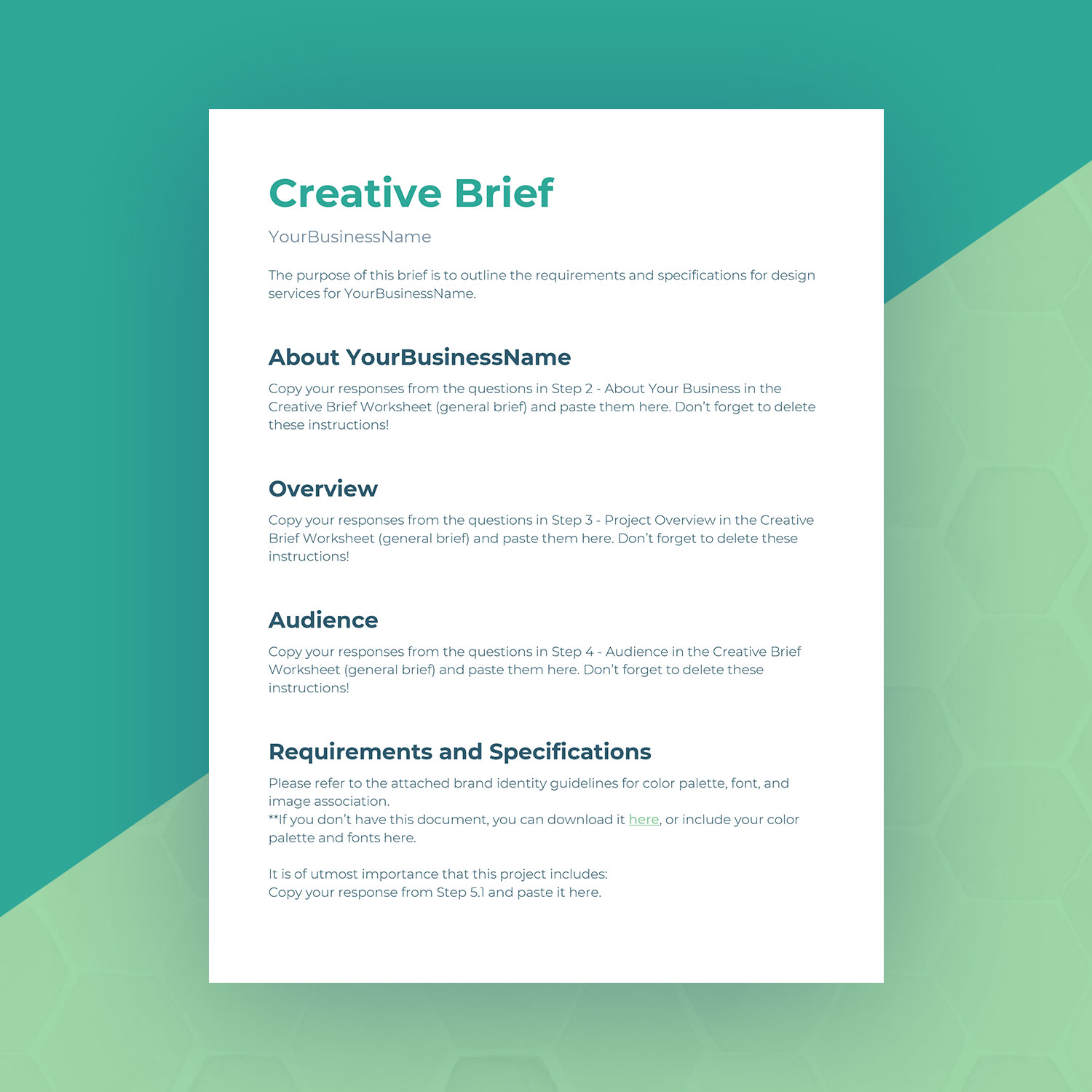Table Of Content

For smaller projects that live in-house (like designs, templates, marketing assets, etc.) the brief is owned by the team who will be executing on the information in the brief. This is usually the creative team, but this team can fall within the brand department or even live within marketing. A creative brief is a short document that sums up marketing, advertising, or design project mission, goals, challenges, demographics, messaging, and other key details. The goal of a brief is to achieve stakeholder alignment on a project before it begins.
ALL PLANS
Why we need to rethink the creative brief - ClickZ
Why we need to rethink the creative brief.
Posted: Tue, 20 Oct 2015 07:00:00 GMT [source]
Projects get bigger, stakeholders are added, and the objective of the project seems to morph as time goes on. Streamline your next product launch or marketing and advertising campaign with a creative brief. As a result, you'll find that your team is more aligned with the project's goals. We've even provided free creative brief templates to get you started — download them below. Remember this—creative briefs aren’t meant to be written and then left stagnant. Before your work begins, your creative brief should be an ever-evolving document that may change as the creative requirements continue to be scoped or tweaked.
Save time with our 12 free marketing budget templates for Excel and Smartsheet
Your design project’s success rests primarily on the degree to which you use a design brief effectively. It should serve as a record of ideas and their implementation, as well as a contract between designer, client, and other invested parties. Here at Foleon, we use Google Docs to create design brief templates that work for us. As you or your clients spread awareness, you should be open to answering questions or taking feedback from colleagues in case they have any great ideas.
Graphic Design Creative Brief Template
With Asana’s creative production tools, you’ll be able to streamline your design projects and your team will be able to deliver game-changing results time and time again. A design brief includes more technical details like timelines, budget constraints, and specific requirements for the project. On the other hand, a creative brief may focus more on brand messaging, tone of voice, and target audience for the project.
Overall, a design brief handles more of the preproduction and business side of the project, while the creative brief tackles the innovative execution. Our goal is to refresh the cafés brand identity to reflect its values of sustainability and community involvement. We aim to increase foot traffic by 30% and boost our social media engagement by 50% within six months after the rebrand launch. Give a brief but descriptive project overview section of what your project is and what it will be used for.
Get awesome design content in your inbox each week
Design briefs help designers and clients work together to ensure projects, products, or services include crucial design-centric components from the start. In this article, you’ll learn how to write a design brief and find free templates. Advertising agencies develop creative briefs often for the various clients they serve. These briefs are concise and include the client's brand guidelines as well as the specific project guidelines. A budget may also be included in the brief so that all teams can make wise decisions about the tactics they recommend for the client.

Step 3: The design brief objective and SMART goals
Design is a journey of exploration, and having inspirational materials or references helps designers understand the aesthetic preferences and the context of the project better. Designers thrive on understanding the purpose of a project, its goals, and the problems they need to solve with their design. When set up correctly, a good design brief holds the power to cultivate effective collaboration between designer and client, fostering clear communication, shared vision, and efficient workflows.
Company and brand overview
Essentially, a brief is a communication tool that lays the groundwork for a campaign. The account manager creates the document in consultation with the client — this collaborative document helps ensure that all project stakeholders are on the same page from the start. The brief also helps the project to run smoothly, stay on schedule, and ultimately be successful. This template allows you to create a detailed creative brief with the functionality of a spreadsheet.
Media Planning Brief Template
Establishing a timeline for your work early on will keep you and your team on track. Decide on a start date and end date, and then fill in as many important dates as you can in between. Knowing the important deadlines from the beginning gives all stakeholders an idea of how long their part of the work will take. Be as specific as you can with dates and deadlines, and keep in mind that adjustments may need to be made as the work progresses. Overall, a creative brief helps keep everyone on the same page—reducing feelings of frustration or confusion—while making sure no part of the design process is bottlenecked. Work through each section of the brief together to ensure that you’re on the same page.
Sometimes internal stakeholders aren’t the only people you’ll be collaborating with on creative work. If you find yourself working with an agency, here’s how you can use a creative brief to make the most out of the partnership. Also note what your audience values, along with their interests, wants, and needs.
An account manager or supervisor develops the creative brief and shares it with client stakeholders before the agency begins working on the project. Most creative briefs require the same standard information, whether you’re creating an ad campaign, designing a logo, or developing a website. These elements include background information, objectives and challenges, target audience, schedule, media strategy, and more, as described below.
While it’s important to outline your design requirements, it’s just as important to inform designers where they have creative freedom. This section lets designers plan, prioritize, and allocate the appropriate resources. The design requirements (design specifications) describe the visual assets, formats, guidelines, and tools designers must use.
It also includes professionals who are always on the move but still need access to functional project tools, such as realtors and event planners. Work Simply’s existing customers are mostly tech-savvy freelance professionals in marketing, software development, and content creation. However, the company’s research shows there’s a significant market for business owners and freelancers who aren’t in front of screens during their workday. Sherry has plans to launch her services in three other cities by the end of the year, with an initial test run in a Seattle suburb in 2 months. She’d like her logo by then but can wait longer for other brand materials.
This is your chance to create a holistic experience for your customers, audience, or clients. Businesses can expect to have numerous interactions with design agencies. Maybe you have hired a design agency to create your website, or build a landing page. Or maybe you have hired them to completely rebrand your site and marketing materials. Regardless of the project’s size, you will need a detailed marketing plan to work effectively with the agency.
A design brief describes a project’s scope, expectations, responsibilities, deadlines, and deliverables specific to designers. [Client.Company] is a leading provider of (insert industry here) services and products. Based in [Client.City][Client.Email], [Client.Company] works with clients across a wide range of industries, including (insert industry here), (insert industry here), and (insert industry here). With a focus on delivering quality products and services, [Client.Company] is known for its innovative approach to design and commitment to meeting customer needs.

No comments:
Post a Comment